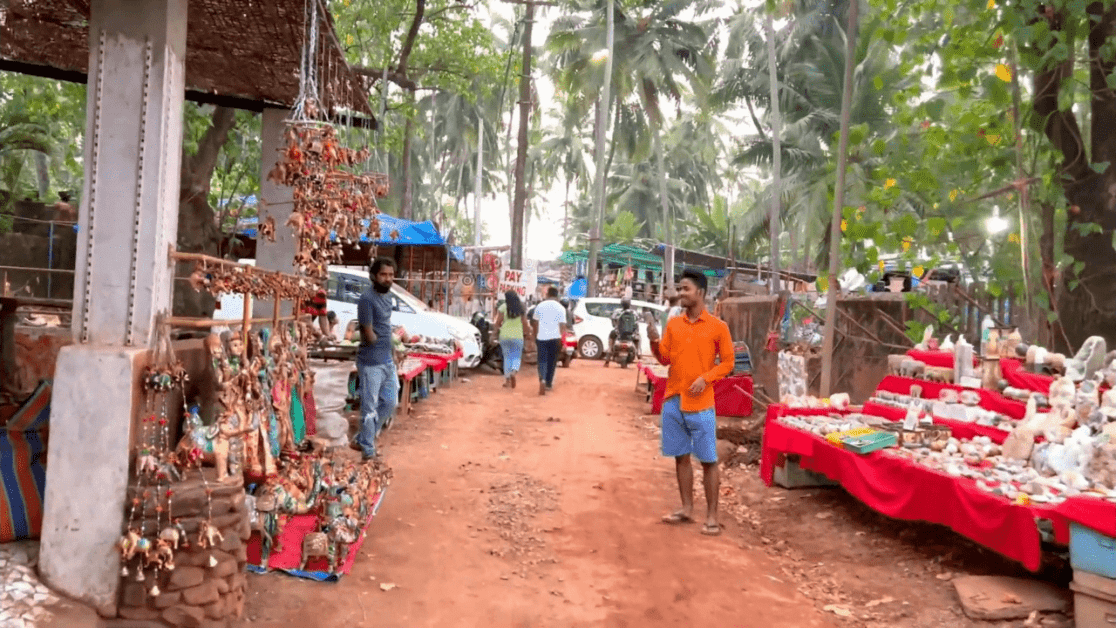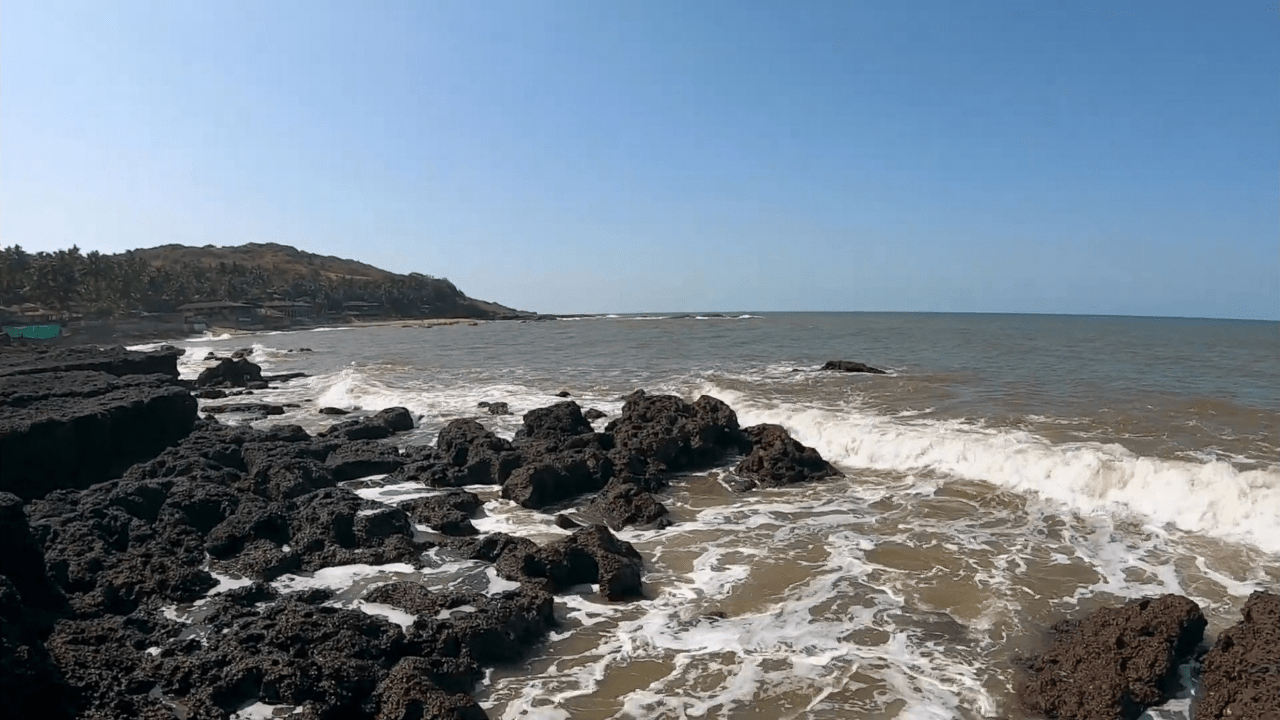Anjuna Beach in Goa is not only a beautiful place but also a historical treasure trove.
Starting from the trade that alternated between East and West to the colonization of Goa by the Portuguese, as can be seen from the architectural features of the area like St. Michael’s Church and Chapora Fort, the history of Anjuna is multi-layered.
The hippie movement of the 1960s gave the place a different flavor, which is reflected at the Anjuna Flea Market.
Nowadays, the beach is not only represented by old Portuguese houses but also by events such as the Anjuna Carnival, which has changed the image of Goa as a universal multicultural tourist destination.
On a trip to Anjuna Beach, you can immerse yourself in the historical past while enjoying its contemporary appeal.
History of Anjuna Beach

Anjuna Beach was part of the sea trade routes of the pre-colonies, and the first settlers of Anjuna came from Portugal.
Anjuna is part of the coastal area of Goa and was an important source of trade between the eastern and western parts of the world.
So there is evidence that hospitality on this coast was dominated by traders from the Middle East, Africa, the Middle East, and Europe long before the arrival of the Portuguese.
Modern archeological finds include pottery and coins found in or around Anjuna, suggesting that Anjuna was once a port.
These finds are indicative of the great trading activity that once prevailed here as people of different cultures and civilizations interacted with each other.
Geographically, it can be vividly described as the traders bringing their exotic goods directly to the shores where tourists sunbathe today.
The Portuguese Influence
The opening of the Portuguese in Goa in the early sixteenth century was a turning point for Anjuna Beach. The Portuguese were not only invaders, but they really did bring a sense of empire-building, as many signs and remaining structures suggest.

St. Michael’s Church
Among the many sights in and around Anjuna Beach, St. Michael’s Church is the most famous.
Built in 1613, this church is an example of the presence of Portuguese colonialism in the area.
The exterior and interior design of the church is baroque and beautifully carved, coupled with fresh and stunning frescoes that give an insight into the religious and cultural changes introduced by the colonizers.
It cannot be emphasized enough that the facade of this church also serves as a historical testimony about Anjuna under the rule of Portugal.
As you walk between the walls of the church, you can feel the echoes of the prayers that have been said for centuries and the sound of the robes that belonged to the priests who served in the church in the past.
The beautifully decorated church, with its tranquil atmosphere, stands out from the other beach districts and is therefore something very special for history lovers.

Chapora Fort
Perched on a hill near Anjuna Beach is Chapora Fort, another historical and architectural monument and scenic destination.
This fort was built in the seventeenth century by the Portuguese to have military facilities in case of invasions.
The ramparts and bastions of the fort still vividly tell of the wars that were fought and won here, leaving large parts of the coastline to protect the fort.
Looking at what remains of the structures, it is easy to imagine the clanking of armor and the military-like shouts that used to be heard in these parts.
Chapora Fort is not only an example of great architectural design but also a vantage point from which you can overlook Anjuna Beach and the Arabian Sea.
This is a reference to the fort’s strategic location during the Portuguese rule over the area.
Today, it offers the perfect combination of history and scenic beauty, which is why many tourists and history buffs love to visit this place.
The Hippie Revolution
Fast forward to the 1960s and 70s, and Anjuna Beach became the epicenter of the hippie movement in Goa. This era brought a different kind of historical significance to the beach, transforming it into a haven for counter-culture and free-spirited living.

Anjuna Flea Market
The Anjuna Flea Market, unfortunately created by the hippies for their own sale to feed themselves and cover their traveling expenses, perfectly defines the essence of this era.
Every Wednesday, the market comes to life with stalls ranging from jewelry to second-hand clothes, most of which are homemade.
In this case, the market is not only a place to buy goods but also a definite focal point of bohemian culture that can attract people with a sense of the spirit of the hippie movement.
As you stroll through the market, you can feel the historical presence of the place and the stories of people from different countries who gathered here to gain freedom and a new life on the beach.
The flea market is the proof of today’s Anjuna and its heritage, an extraordinary combination of old and new, colorful and chaotic.
Anjuna Beach:Then and Now
Anjuna Beach not only has a culturally intense background, but its change over the years is also very interesting.
A look at the timeline shows that the beach has evolved from a simple fishing village to a dynamic tourist attraction.
Old Portuguese Houses
Some of the faded original Portuguese houses that can still be seen around Anjuna can be traced back to this process.
The structures of these houses, their designs, and their different colors tell the story of an earlier generation.
Some of these houses have been converted into guesthouses and cafés over the years, a mixture of old and new.
One such structure of note is Casa Anjuna, a supervised structure that is a boutique hotel that showcases both the colonial heritage of the sites and gives a glimpse of the modern rooms in the building.
Housed in a renovated Portuguese mansion, the hotel gives guests the feeling of being in Anjuna long ago.
Even the furniture and décor are old-fashioned, as if going back in time to feel that ambience.
To learn more about how Portuguese colonization influenced Anjuna Beach, check out Exploring Anjuna Beach: A Colonial Portuguese Impact.
The Cultural Melting Pot
Today’s Anjuna Beach is the perfect blend of many cultures, ancient and modern.
The beach offers something for everyone, from backpackers and hippies to upscale tourists and history buffs young and old.
This multicultural touch is also evident in the nightlife, the various gastronomic offerings and the beach carnivals.
Anjuna Carnival
The Anjuna Carnival which is an annual festival sums up this colourful appendage of this cultural mosaic.
What is seen at Anjuna are re-creations for the contemporary world: parades, music and dance that are presented in carnivals currently depict the historical and cultural aspects that are associated wit It is a period during which everyone in the community mobilizes, and organizes cultural festivities to honor their past and their current stand in society.
Conclusion
Anjuna Beach is more than just a tourist destination; it is a journey through time.
From the ancient trade routes and Portuguese colonization to the hippie revolution and modern cultural melting pot, Anjuna Beach offers a rich historical picture waiting to be explored, so the next time you visit Anjuna Beach, take a moment to immerse yourself in its history.
Walk the streets with curiosity, visit the historical landmarks, and talk to the locals to discover stories that go beyond the surface.
Knowing what historical sites can be found at Anjuna Beach will enrich your experience and make your visit even more meaningful and memorable.
After all, Anjuna Beach is not just about the breathtaking sunsets and vibrant nightlife, but also the layers of history that make it a unique and fascinating destination.
Whether you’re a history buff or a casual traveler, Anjuna Beach offers a captivating journey through time that will leave you with a deeper appreciation for this iconic Goan gem.
For more insights into how the past has shaped Anjuna Beach’s present, you can explore How Anjuna Beach’s Past Shaped Its Present.
FAQS
Anjuna Beach features St. Michael’s Church, Chapora Fort, and old Portuguese houses, highlighting its rich historical and cultural heritage.
St. Michael’s Church in Anjuna was established in 1613, reflecting Portuguese influence with its baroque architecture.
Built by the Portuguese in 1617, Chapora Fort served as a strategic military outpost and offers panoramic views of Anjuna Beach.
The Anjuna Flea Market, established by hippies in the 1960s, offers handmade jewelry, vintage clothing, and a vibrant cultural experience.
Yes, Anjuna has old Portuguese houses, some of which have been converted into guesthouses and cafes, blending history with modern amenities.
Anjuna Beach transformed from a quiet fishing village to a global tourist destination, influenced by Portuguese colonization and the hippie revolution.
The Anjuna Carnival is an annual celebration with colorful parades, music, and dance, reflecting the cultural diversity and historical influences of the area.
Anjuna Beach’s significance lies in its ancient trade routes, Portuguese heritage, and its role in the 1960s hippie movement, making it a rich historical tapestry.
